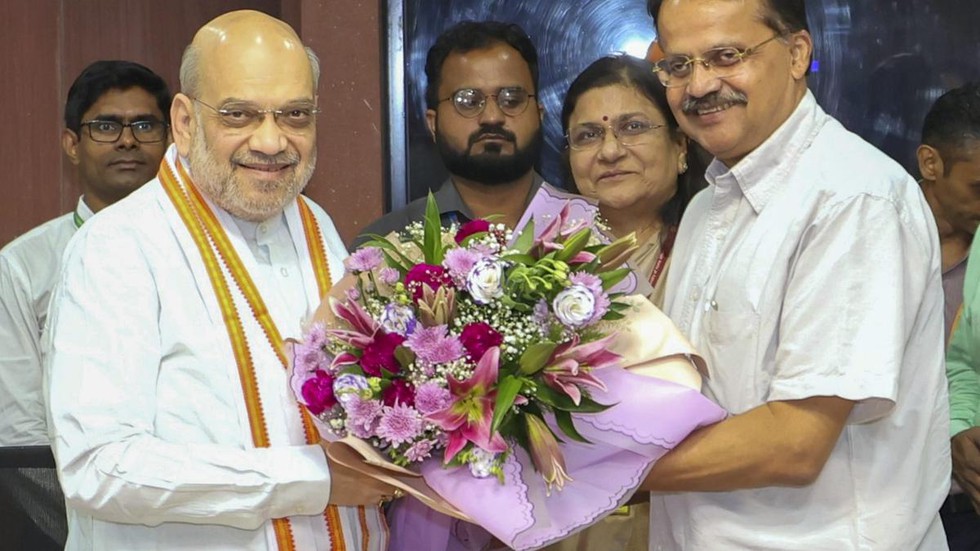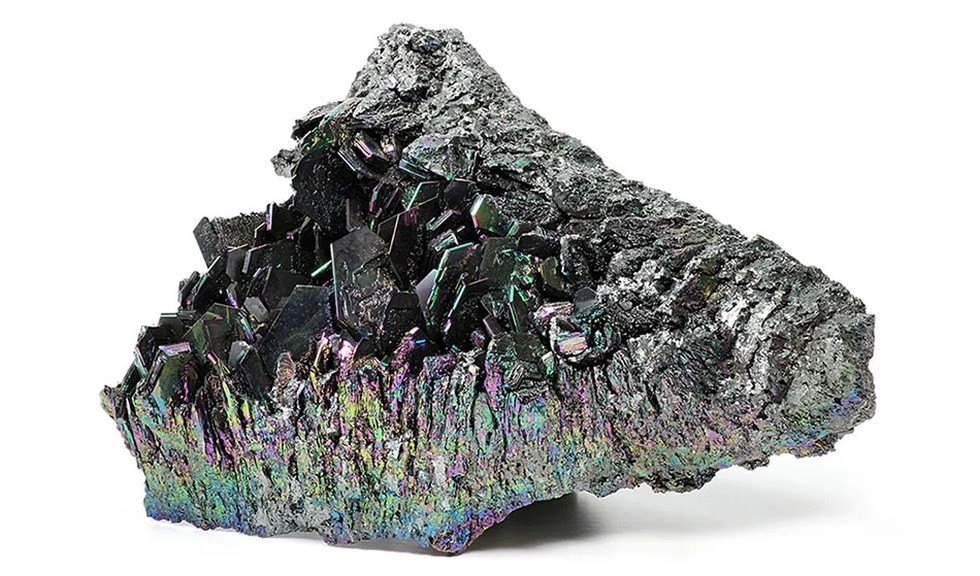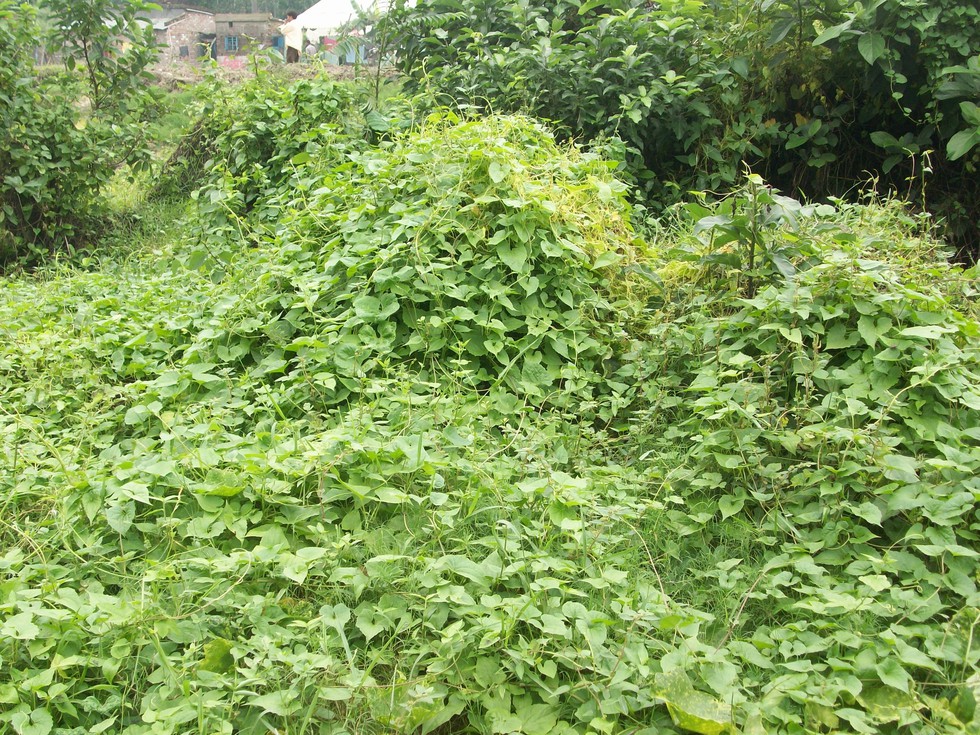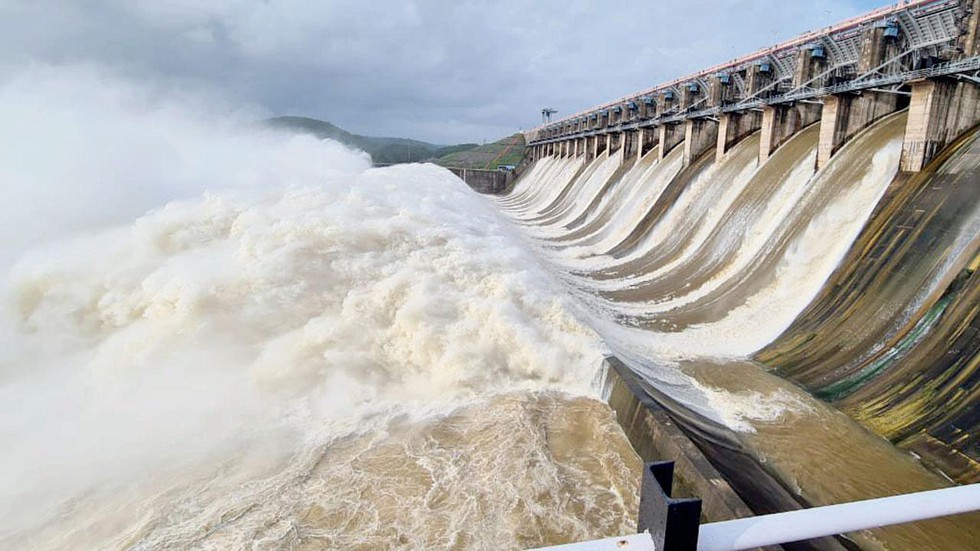
About Parliamentary Committee on Official Language:
- The Parliamentary Committee on Official Language was constituted under the provisions of Section 4 of the Official Languages Act, 1963, in the year 1976.
- Section 4 of the Act says “There shall be constituted a Committee on Official language, on a resolution to that effect being moved in either House of Parliament with the previous sanction of the President and passed by both Houses”.
- The Committee is chaired by the Union Home Minister, and has, in accordance with the provisions of the 1963 Act.
- Under the provisions of the 1963 Act, the panel submits its report to the President, who “shall [then] cause the report to be laid before each House of Parliament, and sent to all the State Governments”.
- Purpose of the committee
- To review the progress made in the use of Hindi for official purposes, and to make recommendations to increase the use of Hindi in official communications.
- Members: It comprises 30 members of Parliament, of which 20 are from the Lok Sabha and 10 from the Rajya Sabha.
2. Air Quality Management Exchange Platform

About Air Quality Management Exchange Platform:
- It is a platform that provides the latest air quality management guidance and tools proposed to meet WHO Air Quality Guidelinesinterim targets.
- It was developed in response to a resolution passed at this year’s United Nations Environment Assembly to increase regional cooperation and action on improving air quality globally.
- Significance of the platform
- It will help to address air quality management capacity gaps, notably with curated guidance across key themes, including how to go about air quality monitoring, inventory development and health impact assessments.
- It will allow decision makers to see a more complete picture of air pollution’s impact and leading to policies that accurately reflect public health needs on a global scale.
- The platform will expand to allow regional and sub-regional communities to exchange knowledge about air quality management best practices.
Key facts about Climate and Clean Air Coalition
- It was founded in 2012 and convened within UN Environment Programme (UNEP).
- It is a voluntary partnership of more than 160 governments, intergovernmental organizations, and non-governmental organizations.
- It works to reduce powerful but short-lived climate pollutants (SLCPs) – methane, black carbon, Hydrofluorocarbons (HFCs), and tropospheric ozone – that drive both climate change and air pollution.
- It aims to connect ambitious agenda setting with targeted mitigation action within countries and sectors.
3. Commission for Scientific and Technical Terminology

About Commission for Scientific and Technical Terminology:
- It was set up in December 1960, to evolve and define scientific and technical terms in Hindi and all Indian languages.
- It was established under clause (4) of Article 344of the Constitution of India.
- It is functioning under the Department of Higher Education, Ministry of Education, Government of India with its headquarters in New Delhi.
- Primary Function:Evolve standard terminology, propagate its use and distribute it widely.
- Other functions:
- Preparation and Publication of Bilingual and Trilingual Glossaries involving English/Hindi and other Indian Languages.
- Preparation and Publication of National terminology.
- Identification and Publication of School Level Terminologyand Departmental Glossaries.
- Identification of Pan-Indian Terms.
- Preparation of Definitional Dictionaries and Encyclopaedias.
- Preparation of university-level textbooks, monographs and journals.
- Grant-in-Aid to Granth Academies, Textbook Boards and University Cells for University level books in regional languages.
- Propagation, expansion and critical review of terms coined and defined through training/orientation programmes, workshops, seminars etc.
- Providing necessary terminology to the National Translation Mission.
Recent initiative of Commission for Scientific and Technical Terminology
- It has launched the web portal ‘shabd.education.gov.in’ aims to be a central repository for all the terminologies prepared for Indian languages.
- Besides all the glossaries of CSTT, other institutions or agencies having such dictionaries are also able to host their work in digital form on this platform.
4. Silicon Carbide

About Silicon Carbide:
- It was discovered by the American inventor Edward G. Achesonin 1891.
- Its chemical formula is SiC and it is the most widely used non-oxide ceramic.
- Properties
- It is an exceedingly hard, synthetically produced crystalline compound of silicon and carbon.
- In addition to hardness, silicon carbide crystals have fracture characteristics that make them extremely useful in grinding wheels and in abrasive paper and cloth products.
- It has high thermal conductivity and high-temperature strength, low thermal expansion, and resistance to chemical reaction which makes it valuable in the manufacture of high-temperature bricks and other refractories.
- It is also classed as a semiconductor, having an electrical conductivity between that of metals and insulating materials.
- This property, in combination with its thermal properties, makes SiC a promising substitute for traditional semiconductors such as silicon in high-temperature applications.
- Applications
- It is used in refractory linings and heating elements for industrial furnaces, in wear-resistant parts for pumps and rocket engines.
- In semiconducting substrates for light-emitting diodes.
- Its primary application is as an abrasive because of its high hardness, which is surpassed only by diamond, cubic boron nitride and boron carbide.
5. Standing Committee on Statistics (SCoS)

About Standing Committee on Statistics:
- It was formed in 2019 to provide a new internal oversight mechanism for official data, revamping a Standing Committee on Economic Statistics (SCES).
- Need:
- The development assumes significance amid sharp critiques of India’s statistical machinery by members of the Economic Advisory Council (EAC) to the PM.
- The EAC’s chairperson (Bibek Debroy) had mooted an overhaul of the system and contended that the Indian Statistical Service has “little expertise in survey design”.
- Terms of reference:
- To ensure more coverage, the panel can have up to 16 members.
- To expand the mandate beyond economic data and advise the Ministry on technical aspects of all surveys, such as sampling, design, survey methodology and finalisation of results.
- To identify data gapsthat need to be filled by official statistics, along with an appropriate strategy to plug those gaps.
- To explore the use of administrative statistics to improve data outcomes.
- Role to be played by NSC: While the panel will help finalise survey results, the NSC will have the ultimate authority to approve the publication of those results.
6. Mikania micrantha

About Mikania micrantha:
- It is a perennial creeping climber known for its vigorous and rampant growth.
- It is a native of Central and South America.
- It is a major invasive species in several parts of Southeast Asia, India and the Pacific Islands.
- It was introduced in India in the 1940s as ground cover in tea plantations and is now a serious threat to several plantation crops as well as forest areas all over the country.
- It grows best where fertility, organic matter, soil moisture, and humidity are all high.
- It damages or kills other plants by cutting out the light and smothering them.
- It climbs up other plants to reach the canopy for better sunlight.
- Mikania is known to have allelopathic potential by producing biochemicals that can inhibit seed germination and seedling growth of other plants.
- It produces thousands of lightweight seeds that are wind-dispersed and also has the ability to reproduce vegetatively through its roots, resulting in rapid and widespread invasion by this weed in any disturbed area.
Key Facts about Bhadra Tiger Reserve (BTR):
- It is situated in the midst of the Western Ghats region of Karnataka.
- The reserve is unique as it is nestled within several hill ranges. The habitat has a good population of elephants and is also an Elephant Reserve.
- It boasts of a substantial tiger population, and as such, the sanctuary was declared the 25th Project Tiger Reserve of India in 1998.
- Rivers: It is well drained by the river Bhadra and its tributaries.
- Vegetation: It has dry deciduous, moist deciduous, shola, and semi-evergreen
- Flora: Teak, Rosewood, Mathi, Honne, Nandi, and many medicinal plants.
- Fauna: Tiger, Leopard, Leopard cat, Dholes, Indian Civet, ungulates like Gaur, Sambar, and Barking Deer are common.
7. Ukai Dam

About Ukai Dam:
- The Ukai Dam, constructed across the Tapti River, is the second largest reservoir in Gujarat after the Sardar Sarovar.
- It is also known as Vallabh Sagar.
- Constructed in 1972, the dam is meant for irrigation, power generation, and flood control.
- The storage capacity of the Ukai dam is almost 46% of the total capacity of all the other existing dams in Gujarat if put together.
- Having a catchment area of about 62,255 km2 and a water spread of about 52,000 hectares, its capacity is almost the same as that of the Bhakra Nangal Dam.
- Ukai dam is an earth-cum-masonry dam, the embankment wall of which is almost 4,927 meters long.
- Its earth dam is 80.77 meters high, whereas the masonry dam is 68.68 meters high.
Key Facts about Tapti River:
- It is one of the major rivers in peninsular India.
- It is one of the three major rivers (the other two being the Narmada River and Mahi River), which flows in an east-to-west direction.
- Course:
- Origin: It rises in the Gawilgarh Hills of the central Deccan plateau in south-central Madhya Pradesh state.
- It flows westward between two spurs of the Satpura Range, across the Jalgaon plateau region in Maharashtra state, and through the plain of Surat in Gujarat state to the Gulf of Khambhat (an inlet of the Arabian Sea).
- Total Length: 435 miles (700 km).
- Its total catchment area is around 65145 sq. km., out of which 80% lies in the Maharastra region.
- The basin of Tapi is surrounded by the Saputara mountain range in the north, the Ajanta and Satmala mountain ranges in the south, and the Mahadeva mountain range in the east.
- The Tapti flows roughly parallel to the longer Narmada River to the north, from which it is separated by the main part of the Satpura Range.
- The two river valleys and the intervening range form the natural barrier between northern and peninsular India.
- Major Tributaries: The important tributaries of the river are Purna River, Girna River, Panzara River, Waghur River, Bori River, and Aner River.
8. Montelukast

About Montelukast:
- It is an oral medication approved to be prescribed daily for long-term use as a “preventer” or “controller” of asthma attacks in adults and children at least 2 years old.
- Montelukast is also used to prevent bronchospasm (breathing difficulties) during exercise in adults and children 6 years of age and older.
- It is also used to help control the symptoms of allergies such as sneezing, stuffy, runny, and itchy nose.
- Developed by Merck and Co. (an American multinational pharmaceutical company), Montelukast was approved by the U.S. Food and Drug Administration (FDA) in 1998 and marketed under the brand name ‘Singulair’.
- It helps improve asthma symptoms by blocking substances in the body called leukotrienes that cause inflammation and swelling.
- In 2020, the U.S. FDA added a ‘black box warning’ to montelukast, and the Medicines and Healthcare Products Regulatory Agency, U.K., issued a health warning saying the drug could cause serious neuropsychiatric adverse effects.

New Cybersecurity Initiatives:
- Cyber Fraud Mitigation Centre (CFMC):
- CFMC has been established at the Indian Cybercrime Coordination Centre (14C) in New Delhi with representatives of major banks, Financial Intermediaries, Payment Aggregators, Telecom Service Providers, IT Intermediaries, and States/UTs Law Enforcement Agencies (LEAs).
- They will work together for immediate action and seamless cooperation to tackle online financial crimes.
- CFMC will serve as an example of "Cooperative Federalism" in law enforcement.
- Samanvaya Platform (Joint Cybercrime Investigation Facilitation System): It is a web-based module to act as a One Stop Portal for data repository of cybercrime, data sharing, crime mapping, data analytics, cooperation, and coordination platform for LEAs across the country.
- 'Cyber Commandos' Program:
- Under this program, a special wing of trained 'Cyber Commandos' in States/UTs and Central Police Organizations (CPOs) will be established to counter threats of the cyber security landscape in the country.
- Trained Cyber Commandos will assist States/UTs and Central Agencies in securing the digital space.
- Suspect Registry: It is a new initiative to strengthen fraud risk management by creating a registry of identifiers based on the National Cybercrime Reporting Portal in collaboration with banks and financial intermediaries.
Key Facts about Indian Cyber Crime Coordination Centre (I4C):
- I4C has been established under the Ministry of Home Affairs (MHA) to deal with cybercrime in the country in a coordinated and comprehensive manner.
- The I4C focuses on tackling issues related to cybercrime for citizens, including improving coordination between various LEAs and stakeholders.
- The centre is located in New Delhi.
- Functions:
- To act as a nodal pointin the fight against cybercrime.
- Identify the research problems and needs of LEAs and take up R&D activitiesin developing new technologies and forensic tools in collaboration with academia/research institutes within India and abroad.
- To prevent misuse of cyberspace for furthering the cause of extremist and terrorist groups.
- Suggest amendments, if required, in cyber lawsto keep pace with fast-changing technologies and international cooperation.
- To coordinate all activities related to the implementation of Mutual Legal Assistance Treaties (MLAT) with other countries related to cybercrimes in consultation with the concerned nodal authority in MHA.
- Components of I4C:
- National Cybercrime Threat Analytics Unit (TAU):For reporting threats pertaining to cybercrimes at regular intervals.
- National Cybercrime Reporting Portal (NCRP):To report various cybercrime complaints by citizens at all India level on a common platform on a 24x7 basis from “anywhere, anytime”.
- National Cybercrime Training Centre (NCTC): To impart training to government officials, especially state law enforcement agencies.
- National Cybercrime Research and Innovation Centre:To carry out research for the development of indigenous tools for the prevention of cybercrimes.
- Platform for Joint Cyber Crime Coordination Team:For coordination, sharing of modus operandi of cybercrimes, data/information among states/UTs LEAs.
- Cybercrime Ecosystem Management Unit:For creating mass awareness in cyber hygiene for prevention of cybercrimes.
- National Cybercrime Forensic Laboratory (Investigation) Ecosystem:For helping LEAs in cyber forensics investigation.
- I4C brings together academia, industry, publicand government in the prevention, detection, investigation, and prosecution of cybercrimes.
- I4C has envisaged the Cyber Crime Volunteers Program to bring together citizens with passion to serve the nation on a single platform and contribute to fight against cybercrime in the country.
10. Red Spider Nebula

About Nebula:
- A nebula is a giant cloud of dust and gas in space.
- Some nebulae (more than one nebula) come from the gas and dust thrown out by the explosion of a dying star, such as a Supernova.
- Other nebulae are regions where new stars are beginning to form. For this reason, some nebulae are called "star nurseries."
- How do stars form in a nebula?
- Nebulae are made of dust and gases—mostly hydrogen and helium.
- The dust and gases in a nebula are very spread out, but gravity can slowly begin to pull together clumps of dust and gas.
- As these clumps get bigger and bigger, their gravity gets stronger and stronger.
- Eventually, the clump of dust and gas gets so big that it collapses from its own gravity.
- The collapse causes the material at the center of the cloud to heat up-and this hot core is the beginning of a star.
- Nebulae exist in the space between the stars—also known as interstellar space.
- The closest known nebula to Earth is called the Helix Nebula. It is approximately 700 light-years away from Earth.
- Nebulas come in many shapes and sizes and can be further divided into several subcategories, including planetary nebulas, supernova remnants, dark nebulas, and emission nebulas.
Red Spider Nebula:
- It is a planetary nebula located 3,000 light-years from Earth and can be found in the constellation of Sagittarius.
- It harbours one of the hottest stars known, which heats the gas around it to form shockwaves 62 billion miles (100 billion km) high.


























































































































































.png)
.png)
.png)
.png)
.png)


.png)
.png)
.png)





.png)
.png)






.png)
.png)
.png)
.png)
.png)
.png)
.png)
.png)
.png)

.png)







.png)
.png)


.png)
.png)
.png)


.png)

.png)
.png)





.jpg)

.png)
.png)


.png)

.png)
.png)
.png)

.jpg)

.jpg)


.png)

.png)
.png)
.png)
.png)
.png)
.png)
.png)
.png)
.png)
.png)




.png)

.png)





.png)
.png)
.png)
.png)
.png)
.png)
.png)
.png)
.png)
.png)
.jpg)
.jpg)

.png)
.png)
.png)
.png)
.png)
.png)
.png)
.png)
.png)
.png)
.png)
.png)
.png)
.png)
.png)
.png)
.png)
.png)
.png)
.png)
.png)
.png)



.png)
.png)

.jpg)
.jpg)


.jpg)
.jpg)
.jpg)
.jpg)
.jpg)

.jpg)








.jpg)
.jpg)
.jpg)
.jpg)
.jpg)

















.jpg)
.jpg)







.jpg)


















.jpg)
.jpg)






























































































.jpg)
.jpg)


























.jpg)

.jpg)










.jpg)








.jpg)




.jpg)










.jpg)


















.jpg)












































.jpg)














.jpg)
.jpg)
.jpg)





.jpg)

.jpg)
.jpg)





































































.jpg)


































.jpg)
.jpg)
















































.jpg)












.jpg)


.jpg)




.jpg)
.jpg)
.jpg)

.jpg)
.jpg)
.jpg)
.jpg)

.jpg)
.jpg)
.jpg)

.jpg)
.jpg)
.jpg)
.jpg)
.jpg)
.jpg)
.jpg)
.jpg)

.jpg)


.jpg)
.jpg)
.jpg)
.jpg)
.jpg)
.jpg)
.jpg)
.jpg)
.jpg)
.jpg)











.jpg)
.jpg)





.jpg)
.jpg)
.jpg)
























.jpg)
























.jpg)









.jpg)
.jpg)







.jpg)
.jpg)









































.jpg)
.jpg)
.jpg)
.jpg)
.jpg)

.jpg)
.jpg)
.jpg)
.jpg)
.jpg)


.jpg)
.jpg)
.jpg)
.jpg)
.jpg)

.jpg)
.jpg)
.jpg)
.jpg)
.jpg)
.jpg)
.jpg)
.jpg)
.jpg)
.jpg)
.png)

.png)
.png)

.png)
.png)
.png)
.png)


.jpg)
.jpg)

.jpg)
.jpg)
.jpg)

.png)
.png)
.png)
.png)
.png)
.png)
.png)

.png)
.png)
.png)
.png)
.png)
.png)
.png)
.png)
.png)
.png)





































































-min.png)



.png)




.png)








































